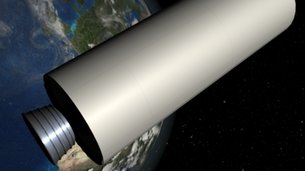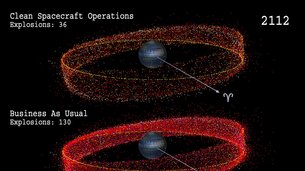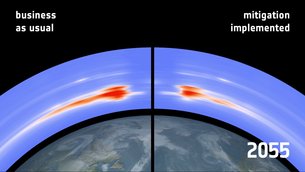SPACE DEBRIS BY THE NUMBERS
The latest figures related to space debris, provided by ESA’s Space Debris Office at ESOC, Darmstadt, Germany.
Information correct as of January 2019
Number of rocket launches since the start of the space age in 1957:
About 5450 (excluding failures)
Number of satellites these rocket launches have placed into Earth orbit:
About 8950
Number of these still in space:
About 5000
Number of these still functioning:
About 1950
Number of debris objects regularly tracked by Space Surveillance Networks and maintained in their catalogue:
About 22 300
Estimated number of break-ups, explosions, collisions, or anomalous events resulting in fragmentation:
More than 500
Total mass of all space objects in Earth orbit:
More than 8400 tonnes
Number of debris objects estimated by statistical models to be in orbit:
34 000 objects >10 cm
900 000 objects from 1 cm to 10 cm
128 million objects from 1 mm to 1 cm
ABOUT SPACE DEBRIS
Satellites in orbit around Earth are used in many areas and disciplines, including space science, Earth observation, meteorology, climate research, telecommunication, navigation and human space exploration. They offer a unique resource for collecting scientific data, commercial opportunities and various essential applications and services, which lead to unrivalled possibilities for research and exploitation.
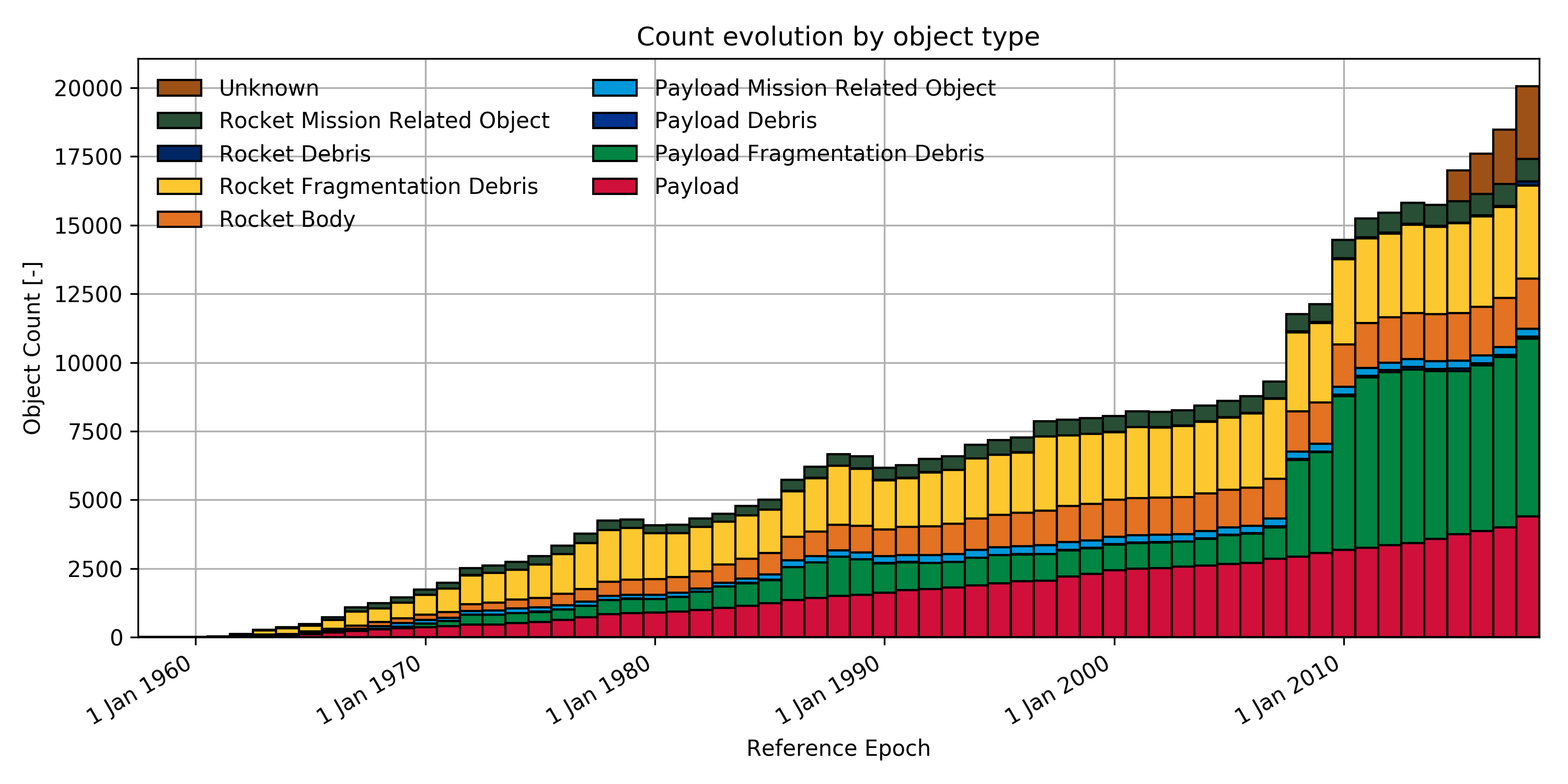 However, in the past decades, with increasing space activities, a new and unexpected hazard has started to emerge: space debris.
However, in the past decades, with increasing space activities, a new and unexpected hazard has started to emerge: space debris.
60 years of space activity
In almost 60 years of space activities, more than 5250 launches have resulted in some 42 000 tracked objects in orbit, of which about 23 000 remain in space and are regularly tracked by the US Space Surveillance Network and maintained in their catalogue, which covers objects larger than about 5–10 cm in low-Earth orbit (LEO) and 30 cm to 1 m at geostationary (GEO) altitudes. Only a small fraction – about 1200 – are intact, operational satellites today.
This large amount of space hardware has a total mass of more than 7500 tonnes.
Objects in orbit include spent upper stages
About 24% of the catalogued objects are satellites (less than a third of which are operational), and about 18% are spent upper stages and mission-related objects such as launch adapters and lens covers.
More than 290 in-orbit fragmentation events have been recorded since 1961. Only a few were collisions (fewer than 10 accidental and intentional events); the majority of the events were explosions of spacecraft and upper stages.
Explosions of satellites and rocket bodies
These fragmentation events are assumed to have generated a population of objects larger than 1 cm numbering on the order of 750 000. The sporadic flux from naturally occurring meteoroids may only prevail over that from human-made debris objects near sizes of 0.1–1 mm.
The main cause of inorbit explosions is related to residual fuel that remains in tanks or fuel lines, or other remaining energy sources, that remain on board once a rocket stage or satellite has been discarded in Earth orbit.
Over time, the harsh space environment can reduce the mechanical integrity of external and internal parts, leading to leaks and/or mixing of fuel components, which could trigger self-ignition. The resulting explosion can destroy the object and spread its mass across numerous fragments with a wide spectrum of masses and imparted velocities.
Antisatellite test: 25% more debris
Besides such accidental break-ups, satellite interceptions by surface-launched missiles have been a major contributor in the recent past.
The Chinese FengYun-1C engagement in January 2007 alone increased the trackable space object population by 25%.
Other sources of debris fragments
The most important non-fragmentation debris source have been more than 2440 solid rocket-motor firings, which have released aluminium oxide (Al2O3) in the form of micrometre-sized dust and mm- to cm-sized slag particles.
A second important source was the ejection of reactor cores from Buk reactors after the end of operation of Russian radar ocean reconnaissance satellites in the 1980s. In 16 such ejection events, numerous droplets of reactor coolant liquid (a low-melting sodium potassium alloy) were released into space.
Another historic source was the release of thin copper wires as part of a radio communication experiment during the Midas missions in the 1960s.
Finally, under the influence of extreme ultraviolet radiation, impinging atomic oxygen and impacting micro particles erode the surfaces of space objects. This leads to mass loss of surface coatings and to the detachment of paint flakes with sizes from micrometre to mm.
Observations with ESA’s 1 m-diameter telescope at Teide Observatory, Tenerife, Spain, have found a population of objects with extremely high area-to-mass ratios. The origin and nature of these objects is not yet fully understood. It is generally agreed now that these objects have been created in the GEO region, possibly from thermal covering material of disposed satellites.
First-ever in-orbit collision
The first-ever accidental in-orbit collision between two satellites occurred at 16:56 UTC, 10 February 2009, at 776 km altitude above Siberia. A privately owned American communication satellite, Iridium-33, and a Russian military satellite, Kosmos2251, collided at 11.7 km/s.
Both were destroyed, and more than 2300 trackable fragments were generated, some of which have since reentered (that is, decayed and reentered the atmosphere, where they have burned up).
Distribution of catalogued objects in space – global view
Satellites launched into LEO are continuously exposed to aerodynamic forces from the tenuous upper reaches of Earth’s atmosphere.
Depending on the altitude, after a few weeks, years or even centuries, this resistance decelerates the satellite sufficiently so that it reenters the atmosphere. At higher altitudes, above 800 km, air drag becomes less effective and objects will generally remain in orbit for many decades.
At any given altitude, the generation of debris through normal launch operations, breakups and other release events is counteracted by natural cleansing mechanisms, such as air drag and lunisolar gravitational attraction. The result of these balancing effects is an altitudeandlatitudedependent concentration (spatial density) of space debris objects.
Maximum debris concentrations can be noted at altitudes of 800-1000 km, and near 1400 km. Spatial densities in GEO and near the orbits of navigation satellite constellations are smaller by two to three orders of magnitude.
Forecast if ‘business as usual’: debris growth
With today’s annual launch rates of nearly 100, and with future break-ups continuing to occur at average historic rates of four to five per year, the number of debris objects in space will steadily increase.
As a consequence of the rising debris object count, the probability for catastrophic collisions will also grow progressively; doubling the number of objects will increase the collision risk by approximately four times.
As the debris population grows, more collisions will occur.
In a ‘business-as-usual’ scenario, such collisions will start prevailing over the now-dominating explosions within a few decades from now. Ultimately, collision fragments will collide with collision fragments, until the entire population is reduced to subcritical sizes.
This self-sustained process, which is particularly critical for the LEO region, is known as the ‘Kessler syndrome’. It must be avoided by the timely application of mitigation and remediation measures on an international scale.
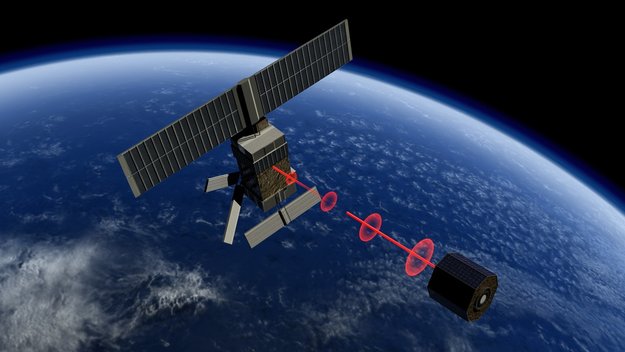
ACTIVE DEBRIS REMOVAL
ESA, as a space technology and operations agency, has identified active removal technologies as a strategic goal.
Active Debris Removal (ADR) is necessary to stabilise the growth of space debris, but even more important is that any newly launched objects comply with post-mission disposal guidelines – especially orbital decay in less than 25 years. If this were not the case, most of the required ADR effort would go to compensate for the non-compliance of new objects.
Studies performed with long-term evolution models like DELTA have shown that a ‘business as usual’ scenario will lead to a progressive, uncontrolled increase of object numbers in LEO, with collisions becoming the primary debris source.
The IADC mitigation measures will reduce the growth, but long-term proliferation is still expected, even with full mitigation compliance, and even if all launch activities are halted. This is an indication that the population of large and massive objects has reached a critical concentration in LEO.
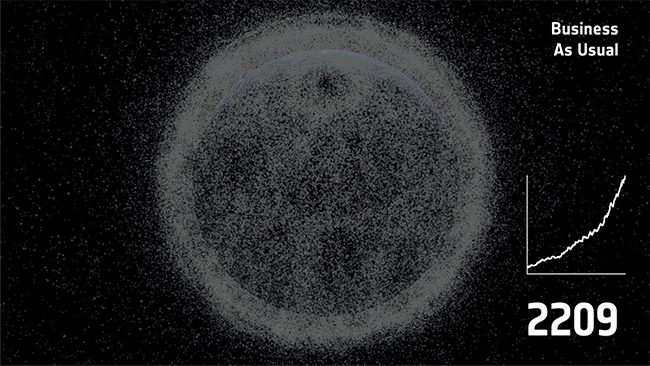
Why space debris mitigation is needed?
But even in a future scenario in which no further objects are added to the space environment (no launches, no debris release, no explosions), the results of simulations by ESA and NASA show that the number of debris objects would continue to grow even under these idealised conditions – under which a collision rate of once every 10 years can be assumed.
Furthermore, an IADC study with six different models from 2013 show that in an almost perfect scenario with 90% compliance with the mitigation guidelines and with no explosions on orbit, the population suffers a steady increase, and a collision could be expected every 5–9 years.
All these studies are a clear indicator that the population of large and massive objects has reached a critical density in LEO, and that mitigation alone is not sufficient.
It is necessary to introduce a programme of remediation measures as well: active debris removal, in order to reduce the number of large and massive (mostly physically intact) objects .
3200 intact objects in LEO
The current LEO environment contains about 3200 intact objects.
An ESA analysis shows that the (lower) level of around 2500 intact objects (the status in the mid-1990s) would have a 50% probability of decreasing the overall debris population. If this is considered to be a desirable goal for remediation, the number of intact objects has to be reduced even while the world’s spaceflight activities continue.
Averaged over the eight years 2004–12, about 72 objects were placed into LEO per year.
However, since 2012, there has been a steep increase in the number of satellites placed in LEO, with the count now running at 125 objects per year (average over the four years 2013–16), mainly due to the increased use of small satellites. In addition, in 2015, several companies announced their intention to deploy large constellations of more than around 1000 satellites in LEO to provide fast Internet around the world.
Limiting launch rates neither feasible nor helpful
Therefore, limiting the launch rate or a further reduction of the allowed lifetime in orbit after the end of the mission (which would be two options to reduce the overall number of intact objects in space) do not seem feasible, because they cannot be mandated.
For all new objects, strong compliance with post-mission mitigation measures would allow maintaining the number of intact objects at a level similar to the current one, and avoid having to deal with more objects in addition to those already in orbit.
Therefore, in order to reduce the number of big objects in LEO, the only option is to actively remove large objects now in orbit and having a long remaining lifetime in space. This would provide several benefits:
- The most critical objects (those that would generate the most fragments in case of any collision, and that have a higher collision risk) could be removed from the environment first;
- Decommissioned objects could also be removed;
- A controlled deorbit could be performed (as large removal targets typically are also most critical in terms of on-ground risk).
Studies at ESA and NASA show that with a removal sequence planned according to a target selection based on mass, area, or cumulative collision risk, the environment can be stabilised when on the order of 5–10 objects are removed from LEO per year (although the effectiveness of each removal decreases as more objects are removed).
Active removal is efficient
Active removal can be more efficient in terms of the number of collisions prevented versus objects removed when the following principles are applied for the selection of removal targets, which can be used to generate a criticality index and the according list:
- The selected objects should have a high mass (they have the largest environmental impact in case of collision);
- Should have high collision probabilities (e.g. they should be in densely populated regions and have a large cross-sectional area);
- Should be in high altitudes (where the orbital lifetime of the resulting fragments is long).
Long-term environment simulations can be used to analyse orbital regions that are hotspots for collisions. The most densely populated region in LEO is around 800–1000 km altitude at high inclinations. The collision hotspots can be ranked by the number of collisions predicted to occur under a business as usual scenario.
Polar hotspots
High-ranking hotspot regions are at around:
- 1000 km and 82º inclination;
- 800 km and 98º inclination;
- 850 km and 71º inclination.
The concentration of critical-size objects in these narrow orbital bands could allow multi-target removal missions. Such missions could be specifically designed for one orbit type were a number of objects of the same type are contained.
While removal targets should be selected from a global perspective, legal constraints dealing with the ownership of space debris objects, and the validation thereof, cannot be neglected.
Also, it should be kept in mind that legal responsibility for a coupled remover/target stack (i.e. when a removal spacecraft attaches itself to a inoperative body for deorbiting) is shared. While removal technology should be generic, i.e. applicable to a wide range of removal targets, which may also include nonESA objects, special emphasis on firm agreements with the owners of the object is required.
Actions to counter the exponential growth of space debris, such as mitigation and active removal, are most effective when they are applied as soon as possible. The further the number of critical intact objects in the environment deviates from a sustainable level, the more objects will have to be removed to suppress any additional growth and the multiplying effects thereof.
ESA’s internal studies have shown that continuous removal actions starting in 2060 will only have 75% of the beneficial effect compared to an immediate start.
ESA’s CleanSpace initiative is looking at the required technology developments, including advanced image processing, complex guidance, navigation and control and innovative robotics to capture debris.
Technologies for a wide range of removal targets will be studied, including real applications. The eDeorbit mission may be the first ADR mission conducted by ESA, with the objective of removing a large ESA-owned object from its current orbit and performing a controlled reentry into the atmosphere.
Source: esa.int

